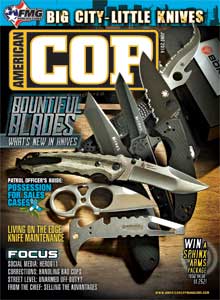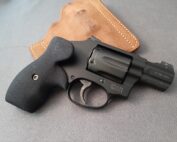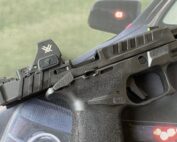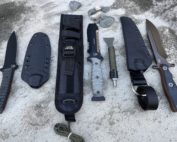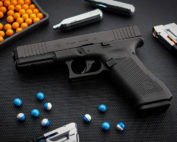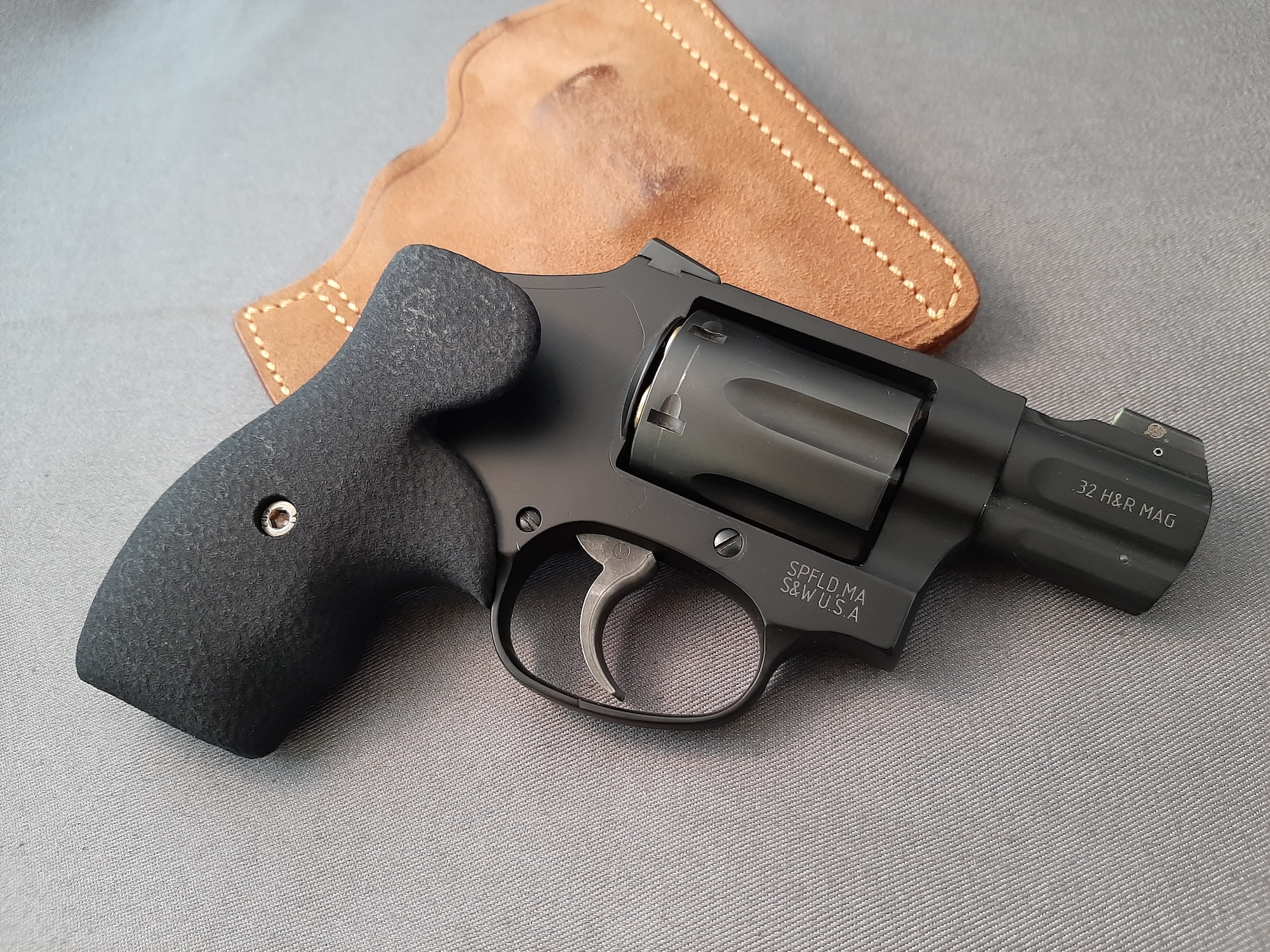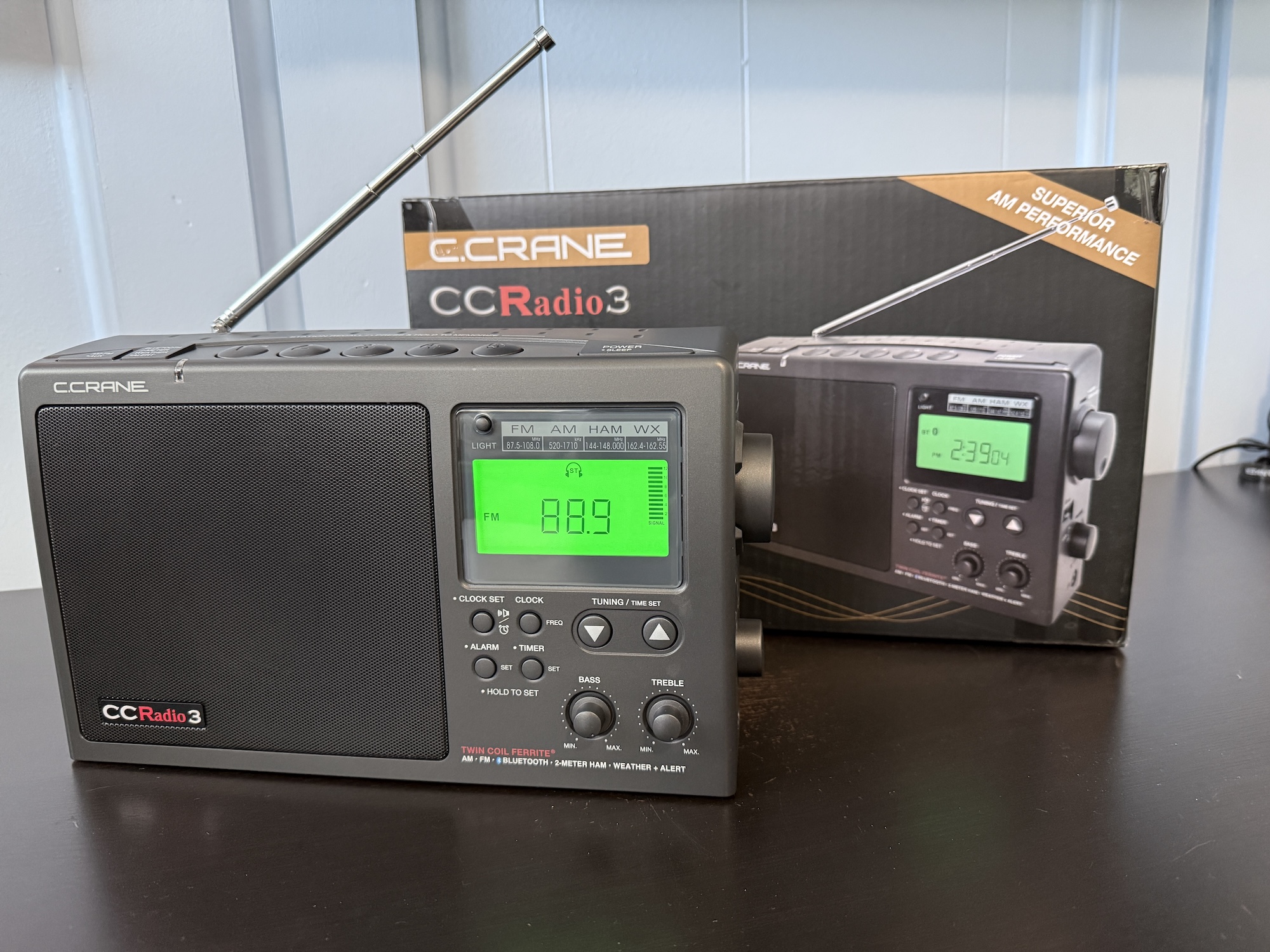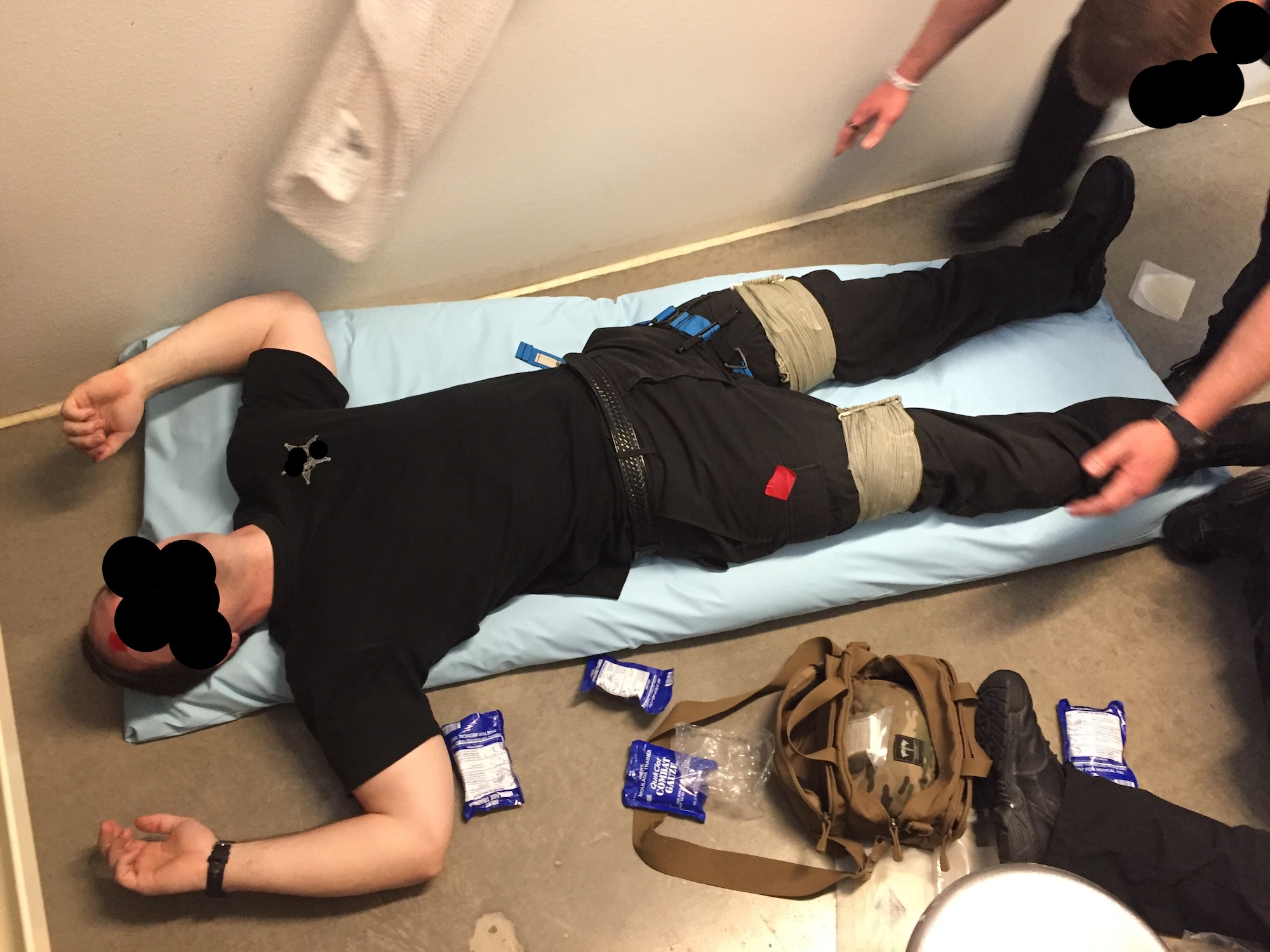
edge_big
Living On The Edge.
Most cops carry a knife of some sort as part of their personal kit. And like any other piece of gear, if you want it to perform properly when you need it, it pays to keep it well maintained. Sadly, many officers have no idea how to do it and frequently end up carrying tools so dull or worn that they’re actually a hazard to their owners.
The good news is that with the proper tools, a little knowledge and a little time, maintaining a duty knife is a very simple process.
Buy Quality
Before we talk about maintenance, take a hard look at the knife you carry. If it’s from a well-known and respected brand and is well made from quality materials, you’ve got something to work with. If you bought it at a gas station or flea market and it seems to go dull just looking at it, it’s time to cut your losses — because you won’t be cutting anything else. If you can’t polish a turd, you won’t be able to sharpen one either. Buy a decent knife.
Lint can build up in the lock notch of lockback folding knives,
preventing the lock from engaging properly. Inspect this area
regularly and use a toothpick to clean it.
If your clip snags on something or becomes too loose, remove
it completely and use padded pliers to grip the base while
you gently bend it back into shape.
If your pocket clip is too tight, pad the jaws of a pair of pliers
with masking tape and gently flex the clip near its base, not at
the tip of the clip.
Keep It Clean
Although knife policies vary tremendously from department to department, folding knives tend to be the preferred choice among most officers. Because they have moving parts, they’re also more challenging to maintain than fixed blades, so they’ll be our primary focus.
The first priority of folder maintenance should be to keep it free of dust, dirt and other debris. Pocket trash and lint have a tendency to collect in the handle slot and the lock mechanism and over time can prevent the lock from engaging properly. This is particularly common for knives carried loosely in a pocket, but is still a concern for folders carried clipped to a pocket or even in a belt pouch.
The easiest way to clean a folding knife is with an air compressor or the canned air available at computer supply stores. First, open the knife and blow out the handle slot and, for liner lock knives, the area between the lock bar and the handle scale. For lockback knives, open the blade to 90 degrees, turn the handle slot down and depress the lock release while blowing out the handle slot from rear to front. This will ensure the dirt around the tang of the blade is blown out through the gap between the tang and the lock bar.
If compressed air isn’t enough, you can clean the interior of your knife’s handle with rubbing alcohol and some cotton swabs. Flatten the ends of the cotton swabs with pliers or tap from a hammer so they’ll fit into the handle slot more easily and then dip them in the alcohol and swab out the handle. Pay particular attention to the area around the tang of the blade and the recess under the locking bar of liner lock knives. If your knife is a lockback type, use a toothpick to clean out the locking notch on the back of the tang. Dirt buildup in this notch can keep the lock from engaging completely and compromise its function.
If your knife is really dirty, run it under hot tap water while scrubbing with a soft-bristled toothbrush and some dish detergent, then blow it dry with compressed air.
Sparingly lubricate the blade pivot of your folder with quality gun oil. An
applicator tube makes it easier to control the oil and get it where it needs to go.
The ball bearing detent on liner lock knives can sometimes drag
and slow the knife’s action. A drop of oil right on the detent
ball solves this problem.
Lubrication
Now that your knife is clean, you should lubricate the blade pivot. Oil attracts dust and dirt, and excessive lubrication can compromise your grip, so go easy. I lube my knives with a Teflon-based gun lubricant with a long applicator tube that allows me to precisely control the amount of lube dispensed. Alternately, you can place a drop of lube on a toothpick and use it to apply the lube exactly where you want it. Put one drop on each side of the blade tang and open and close the blade a few times to coat the pivot and the contact surfaces on the side of the blade.
In lockback knives, the outside of the blade tang is in constant contact with the lock bar, so put a small drop on the back of the tang to ensure these parts move smoothly. Sometimes, the lock bar itself can stick and affect the knife’s action. If this happens, a small drop of oil at the lock bar pivot usually does the trick.
One common issue with liner lock knives and frame lock knives is that the ball bearing for the detent mechanism, which holds the blade in the closed position, galls or scrapes against the side of the blade tang. If your knife suffers from this problem, open the blade partway and look into the handle near the blade to find the protruding ball bearing in the liner. A drop of oil right on the ball usually solves the problem and will smooth out the action.
To clean inside the handle slots of folders use flattened
cotton swabs dipped in rubbing alcohol.
Use canned air to blow the dirt out of the
handles and lock mechanisms of folding knives.
Got A Screw Loose?
Most folders are assembled with screws, and keeping them properly tightened can be critical to the proper performance of your knife. To do this, you need to invest in the right tools. Using the wrong tool can easily strip the screw heads and make further maintenance and repair of your knife extremely difficult.
Most tactical folders use Torx screws in the T-6 to T-10 range. Fortunately, most well-stocked hardware and home improvement stores sell Torx driver kits that include these bits for less than $10, so make the investment.
The most common screw issues with folders are the loosening of the blade pivot screw and pocket clip screws. Although simply cinching them down may be enough, the best way to keep them secure is to apply a little temporary Loctite to the threads. Loctite also allows you to tune the tightness of the pivot pin and the knife’s action. To do this, back the screw (male) side of the pin out and put a drop of blue Loctite on the threads. Replace the screw in the female side of the post and tighten it until the blade binds. Then, carefully back it out an eighth of a turn at a time until you achieve the desired degree of tightness in the action. When you get there, stop and allow the Loctite to dry completely before using the knife.
While we’re on the topic of pivot pins, do not purposely loosen your knife’s pivot to make your knife easier to “flick” open. Loosening the pivot can compromise the lock’s function and cause it to fail under pressure.
A cookie sheet with raised edges and lined with an old
towel helps prevent losing small screws and parts.
Use Protection
If you’ve ever dropped a tiny screw on the floor or carpet, you know how frustrating it can be. To help avoid this problem, I work on my knives on an old white towel placed inside a cookie sheet with raised edges. If I drop a screw, it lands inside the cookie sheet, doesn’t bounce and is easy to see. Working somewhere with a hard floor instead of carpet also makes screws easier to find if they do hit the floor. If you do manage to drop a screw or other part and it’s made of steel, a flat bar magnet helps find it quickly.
While I’m on the subject of screws, I should note most manufacturers will void your warranty if you disassemble your knife beyond a screw or two. They do this because they can’t guarantee you have the skill to put it back together correctly so it will function as designed. If you’re the rebellious type and insist on taking your knife completely apart, take digital photos or even video along the way so you can remember how everything goes back together. You can also use an ice cube tray or egg carton to store screws and other small parts in the order in which they were removed, making reassembly a lot easier.
If for whatever reason you manage to lose a screw, many hobby shops, well-stocked hardware stores and dedicated fastener suppliers (like Fastenal) stock micro screws. If your knife was made overseas, its screws are probably metric, so it’s best to bring it along and test fit replacement screws to make sure they’re right.
You can also get replacement screws from most knife manufacturers. The best way to get exactly what you need is to take a photo of your knife with the blade open and something pointing to the hole for the missing screw. E-mail this to them so they can identify the exact model and send you the specific part you need.
Folder maintenance requires proper tools, like Torx drivers,
micro screwdrivers and hex wrenches. Invest in the right tools
and use non-permanent Loctite to keep screws from backing out
and loosening with time.
Configuring/Fixing Clips
Most modern folding knives feature pocket clips making them much more convenient, accessible and easier to carry. Unfortunately, they also make the knives prone to hooking and snagging on things, resulting in bent, broken and mangled clips.
First, let’s consider tension adjustment. If a clip is too tight, the knife is hard to draw. Too loose, and the knife flops around and is easily lost. To increase the tension of a steel clothing clip, it’s best to remove it completely from the knife. To do this, place the closed knife on a towel or mouse pad and, using the proper type and size of tool, apply firm downward pressure as you loosen the clip screws. This will prevent stripping the screw heads.
With the clip removed, pad the jaws of two pairs of pliers with masking tape and carefully bend the clip in the direction of the knife’s handle. Check the bend by placing the clip on the handle or other flat surface to make sure everything lies flat. Once you’ve got it right, carefully reattach the clip, adding some Loctite to the screw threads to keep them from backing out.
A tight clip can be loosened in the same way, or you can adjust it while still on the knife. To do this, pad a set of needle nose or duckbill pliers with masking tape. Grip the clip just forward of the base and very carefully bend it away from the handle. A little goes a long way, so work slowly and test the clip’s retention often. This method is much better than bending the clip from the tip, which often results in sprung or broken clips.
Changing the position of your pocket clip is also easy. As described earlier, place the knife on a pad and apply firm downward pressure as you loosen all the screws. Once they’re loose, lift the entire clip, leaving the screws in the clip holes and keeping them captive with your fingertip. Held in this way, it’s easy to put a drop of Loctite on each. It’s also easier to align them with the new mounting holes and allows you to avoid fumbling with individual screws. Tighten them slowly with firm downward pressure to protect the screw heads from stripping.
Keep It Sharp
A knife is meant to cut, so it needs to be sharp. Although there are many sharpening systems available that produce great results with minimal skill, my “go-to” sharpener is the Spyderco Sharpmaker. It takes all the guesswork out of maintaining proper sharpening angles by simply keeping the plane of the blade vertical. It’s also one of the few sharpeners available that will sharpen serrated edges.
A sharp, properly functioning knife is an incredibly useful tool. With a few simple tools and the information in this article, you can keep your knife in top condition and ensure it will serve you well when you need it most.
By Michael Janich
Read More Feature Articles
Order Your Printed Copy Of The American COP June 2014 Issue Today!
Download A PDF Of The American COP June 2014 Issue Now!
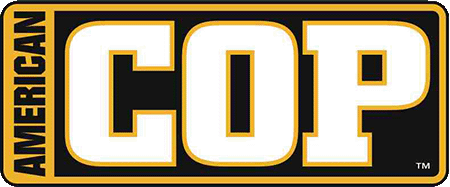

 (No Ratings Yet)
(No Ratings Yet)









